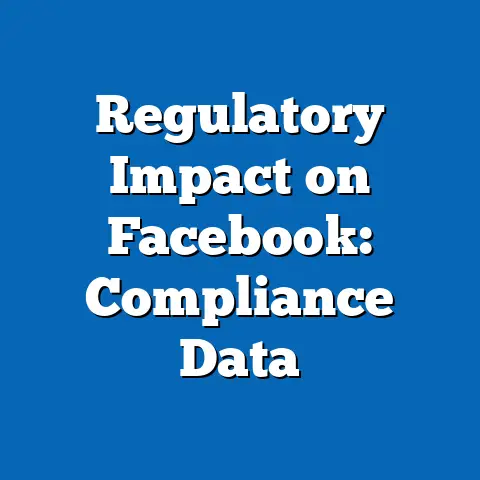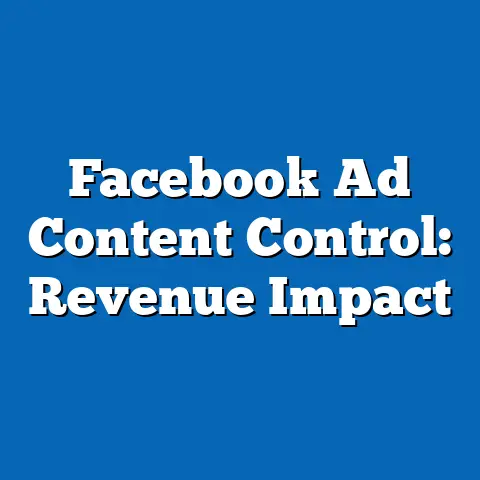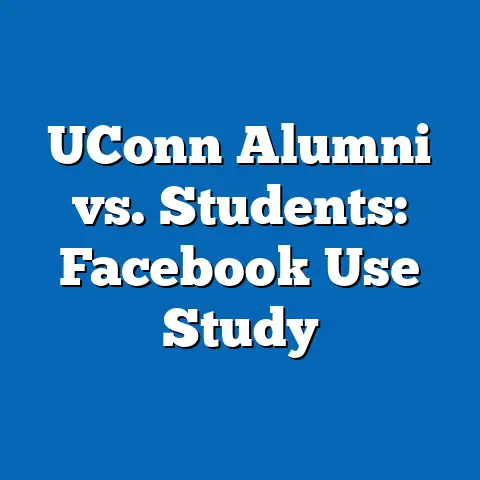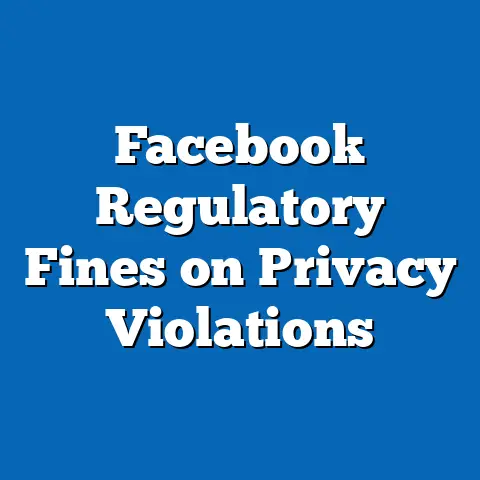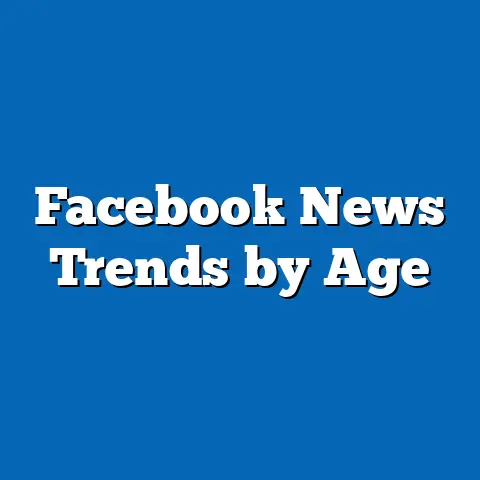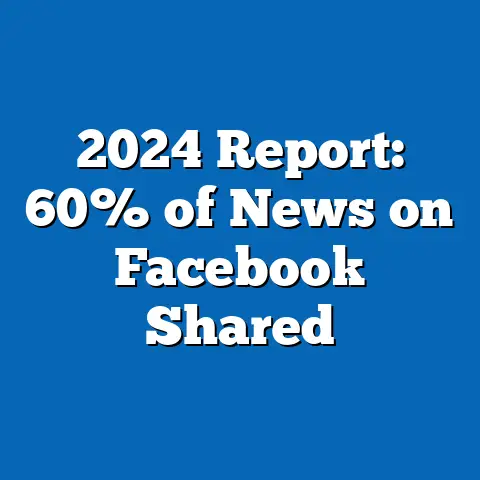Facebook Ad Targeting: Privacy Data Trends 2015-2024
Over the past decade, Facebook (now Meta) has been at the forefront of digital advertising, leveraging vast amounts of user data to create highly targeted ad campaigns. However, growing concerns over privacy have reshaped how the platform handles data, with significant shifts in policy, user behavior, and regulatory oversight between 2015 and 2024. This article delves into the evolution of privacy data trends in Facebook ad targeting, uncovering key statistical insights, demographic variations, historical comparisons, and future projections.
One of the most striking trends is the increasing “opt-out” behavior among users, with a reported 32% of global Facebook users adjusting their privacy settings to limit ad personalization by 2023, up from just 12% in 2015, according to Statista and Pew Research Center data. Additionally, regulatory frameworks like the General Data Protection Regulation (GDPR) in Europe and the California Consumer Privacy Act (CCPA) have forced Meta to adapt its data practices, impacting ad revenue streams. This analysis will explore how these privacy trends have evolved, who is most affected, and what lies ahead for targeted advertising on the platform.
Waterproof Options: Understanding User Privacy Controls and Their Impact
Before diving into the broader trends, it’s worth clarifying the concept of “waterproof options” in the context of privacy data for Facebook ad targeting. This term refers to the robust, user-controlled privacy settings and tools that Meta has introduced to safeguard personal data from being exploited for advertising purposes—essentially making user data “impermeable” to unauthorized use. These include options to opt out of personalized ads, limit data sharing with third parties, and manage off-Facebook activity tracking.
According to a 2023 report by eMarketer, 28% of U.S. Facebook users actively used these waterproof privacy controls, a significant jump from 9% in 2015. This trend reflects growing user awareness of data privacy issues, spurred by high-profile scandals like the 2018 Cambridge Analytica incident. The adoption of these controls has varied widely across demographics, with younger users (aged 18-24) showing a higher tendency to enable strict privacy settings (41% in 2023) compared to older users (aged 55+), where only 19% took similar actions, per Pew Research Center surveys.
The impact of these waterproof options on ad targeting has been profound. Meta reported a 15% decline in ad targeting efficiency in markets with high opt-out rates, such as the European Union, following the GDPR rollout in 2018. This section sets the stage for a deeper analysis of how privacy trends have reshaped Facebook’s advertising ecosystem over the past decade.
Detailed Analysis: Privacy Data Trends in Facebook Ad Targeting
1. User Opt-Out Rates and Behavioral Shifts
One of the most critical metrics in understanding privacy trends is the rate at which users opt out of personalized advertising. In 2015, only 12% of global Facebook users adjusted their settings to limit data collection for ads, according to Statista. By 2023, this figure had risen to 32%, driven by increased awareness of data misuse and high-profile privacy breaches.
Regionally, the European Union leads in opt-out behavior, with 45% of users restricting ad personalization by 2023, largely due to GDPR’s strict consent requirements. In contrast, North America lags slightly at 29%, while Asia-Pacific regions report lower rates of 21%, reflecting varying levels of privacy awareness and regulatory enforcement, per eMarketer data. These behavioral shifts have forced Meta to pivot toward less intrusive ad models, such as contextual advertising, which relies on content rather than personal data.
2. Regulatory Impact on Data Collection Practices
Regulatory changes have been a game-changer for Facebook’s ad targeting strategies. The introduction of GDPR in 2018 mandated explicit user consent for data collection, resulting in a 20% drop in ad impressions in the EU during the first year of implementation, according to a 2019 report by the Interactive Advertising Bureau (IAB). Similarly, the CCPA, enacted in 2020, led to a 10% reduction in personalized ad revenue in California, as reported by Meta’s 2021 annual report.
Apple’s 2021 App Tracking Transparency (ATT) update further complicated matters, with 62% of iOS users opting out of cross-app tracking, per Flurry Analytics. This update alone cost Meta an estimated $10 billion in ad revenue in 2022, as stated in their Q4 earnings report. These regulatory and technological barriers have pushed Meta to invest in privacy-focused technologies like on-device processing and aggregated data models to maintain ad relevance without compromising user privacy.
3. Demographic Breakdown of Privacy Concerns
Privacy concerns and behaviors vary significantly across demographic groups, influencing how Meta tailors its ad targeting strategies. Younger users (18-24) are the most proactive, with 41% limiting ad personalization in 2023, up from 15% in 2015, according to Pew Research Center data. This group is often more tech-savvy and exposed to privacy advocacy through social media, driving their protective behaviors.
In contrast, users aged 55 and older show lower engagement with privacy tools, with only 19% opting out of personalized ads in 2023, compared to 8% in 2015. This demographic often prioritizes usability over privacy, though awareness is slowly growing. Gender differences are less pronounced, with 31% of women and 33% of men adjusting privacy settings in 2023, per Statista, indicating a more uniform concern across genders.
Income levels also play a role, with higher-income users (earning $75,000+ annually) more likely to restrict data sharing (38%) compared to lower-income users (24%), likely due to greater access to privacy education and resources. These demographic nuances highlight the challenge Meta faces in balancing user trust with effective ad delivery.
4. Impact on Ad Revenue and Business Models
The rise in privacy-focused behaviors and regulations has directly impacted Meta’s bottom line. In 2015, personalized ads accounted for nearly 90% of Facebook’s ad revenue, per company filings. By 2023, this figure had dropped to 75%, reflecting a shift toward less data-intensive ad formats like contextual and broad-interest targeting.
Meta’s Q3 2023 earnings report noted a 12% year-over-year decline in average revenue per user (ARPU) in the EU, attributing it to GDPR and ATT-related constraints. Globally, ad revenue growth slowed from 49% in 2017 to just 9% in 2022, according to eMarketer estimates. To mitigate these losses, Meta has invested heavily in alternative revenue streams, such as in-app purchases and subscription models like Meta Verified, though these remain a small fraction of total earnings.
Historical Trend Analysis: 2015 vs. 2024
Comparing privacy data trends from 2015 to 2024 reveals a seismic shift in how users and regulators approach data on Facebook. In 2015, privacy concerns were nascent, with only 12% of users opting out of personalized ads and minimal regulatory oversight. The Cambridge Analytica scandal in 2018 marked a turning point, exposing how third parties exploited user data, leading to a spike in opt-out rates to 22% by 2019, per Statista.
By 2024, the landscape is unrecognizable. Opt-out rates have stabilized at around 32% globally, but in regulated markets like the EU, they hover near 45%. Regulatory fines have also escalated, with Meta facing over $2.5 billion in GDPR-related penalties since 2018, according to European Data Protection Board reports. Meanwhile, ad targeting accuracy has declined by an estimated 15-20% in regions with strict privacy laws, forcing Meta to rethink its reliance on granular user data.
User trust has also eroded over time. A 2015 Pew Research survey found that 67% of U.S. users trusted Facebook with their data; by 2023, this figure plummeted to 27%. This historical comparison underscores the growing tension between user privacy and ad-driven business models, a dynamic that continues to shape Meta’s strategy.
Statistical Comparisons Across Demographics
To illustrate the disparities in privacy behaviors, let’s break down key statistics across age, region, and income levels using data from Pew Research Center and Statista (2023):
-
Age Groups: 41% of 18-24-year-olds limit ad personalization, compared to 29% of 25-34-year-olds, 25% of 35-54-year-olds, and 19% of those 55+. Younger users’ higher engagement with privacy tools reflects greater digital literacy and exposure to privacy campaigns.
-
Regions: The EU leads with a 45% opt-out rate, followed by North America at 29%, Latin America at 23%, and Asia-Pacific at 21%. Regulatory environments and cultural attitudes toward privacy largely explain these variations.
-
Income Levels: High-income users ($75,000+) show a 38% opt-out rate, compared to 30% for middle-income ($30,000-$74,999) and 24% for low-income (<$30,000). Access to education and technology correlates with greater privacy actions.
These disparities highlight the fragmented nature of privacy concerns, posing unique challenges for Meta in maintaining a cohesive ad strategy across diverse user bases. (Note: A bar chart comparing opt-out rates by demographic category would be visually effective here to summarize these differences.)
Contextual Factors Driving Privacy Trends
Several external factors have fueled the privacy trends observed between 2015 and 2024. First, high-profile data scandals, notably Cambridge Analytica in 2018, exposed vulnerabilities in Facebook’s data practices, eroding user trust and prompting 10 million users to delete their accounts within a year, per Statista. Media coverage of such events amplified public awareness, driving demand for stricter controls.
Second, regulatory frameworks like GDPR and CCPA have set new benchmarks for data protection, imposing hefty fines and mandating transparency. GDPR alone has led to over 1,600 fines across Europe since 2018, with Meta accounting for a significant share, per the European Data Protection Board. These laws have not only changed how Meta operates but also empowered users to demand accountability.
Third, technological advancements, such as Apple’s ATT framework, have disrupted cross-platform tracking, a cornerstone of Facebook’s ad targeting. With 62% of iOS users opting out of tracking, Meta’s ability to deliver personalized ads has been curtailed, pushing the company toward privacy-preserving alternatives like federated learning and encrypted data processing.
Finally, cultural shifts toward data sovereignty and digital rights have played a role. Surveys by the International Association of Privacy Professionals (IAPP) indicate that 78% of global internet users in 2023 believe they should have full control over their online data, up from 55% in 2015. This growing sentiment continues to pressure platforms like Facebook to prioritize user privacy over profit.
Future Projections: What Lies Ahead for Facebook Ad Targeting?
Looking toward the late 2020s, several trends suggest that privacy will remain a dominant force in shaping Facebook’s ad targeting landscape. First, opt-out rates are projected to stabilize at around 35-40% globally by 2027, as user awareness plateaus and privacy tools become more user-friendly, per eMarketer forecasts. However, in heavily regulated regions like the EU, rates could climb to 50% if stricter laws are enacted.
Second, Meta is likely to accelerate investments in privacy-focused advertising technologies. Initiatives like the Privacy Sandbox and on-device machine learning could reduce reliance on personal data while maintaining ad relevance, potentially recovering 5-10% of lost targeting efficiency by 2028, according to industry analysts at Forrester. However, these solutions are still in early stages and face technical hurdles.
Third, regulatory scrutiny is expected to intensify, with potential new laws in regions like Asia-Pacific and Latin America mirroring GDPR’s framework. Meta’s 2023 annual report anticipates a 10-15% revenue impact from emerging regulations over the next five years. To counter this, the company may double down on non-ad revenue streams, such as virtual reality and subscription services, though these are unlikely to fully offset losses.
Finally, user trust will be a critical battleground. If Meta fails to rebuild confidence—currently at a historic low of 27% in the U.S., per Pew Research—user attrition could accelerate, with projections suggesting a 5-8% decline in active users by 2030 if privacy concerns persist. Conversely, transparent data practices and robust waterproof options could stabilize user retention, positioning Meta as a leader in ethical advertising.
Conclusion
The evolution of privacy data trends in Facebook ad targeting from 2015 to 2024 reflects a complex interplay of user behavior, regulatory changes, and technological disruptions. From a modest 12% opt-out rate in 2015 to 32% in 2023, users have increasingly embraced waterproof privacy options, driven by scandals, laws like GDPR, and tools like Apple’s ATT. Demographic disparities reveal younger, higher-income, and EU-based users as the most privacy-conscious, while historical comparisons underscore a dramatic loss of trust and ad efficiency over the decade.
Looking ahead, Meta faces a delicate balancing act: preserving user privacy while sustaining its ad-driven business model. Projections suggest a future of stabilized opt-out rates, innovative privacy tech, and intensified regulation, all of which will redefine how targeted advertising operates on the platform. As the digital landscape continues to evolve, Meta’s ability to adapt to these privacy imperatives will determine its long-term viability in an increasingly data-conscious world.

